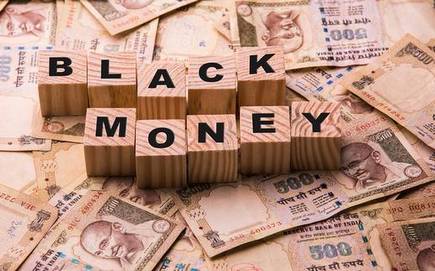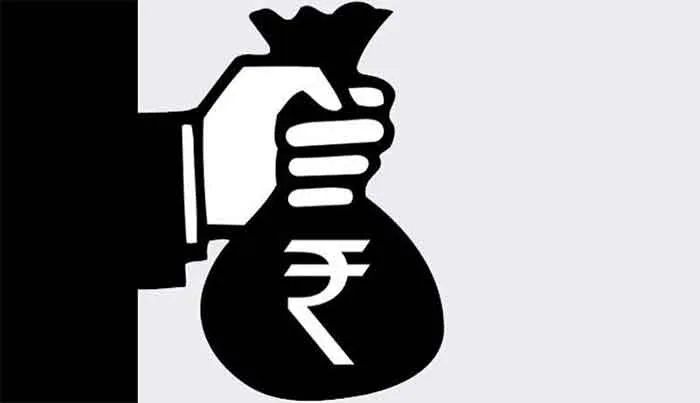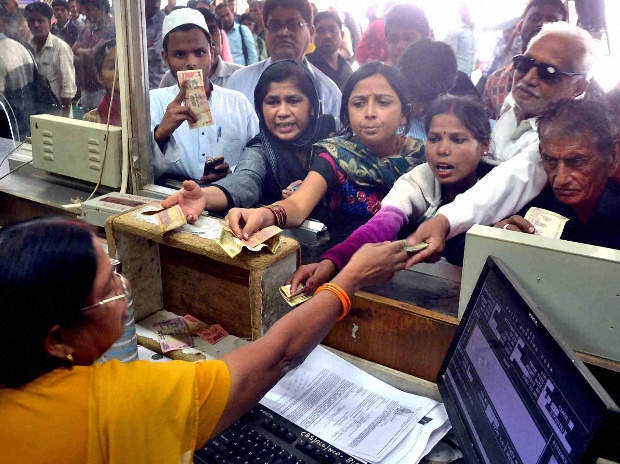
Before 2014 general election the issue of black money and corruption peaked and, the country also saw two major anti-corruption and black money movements in the form of Anna Hazare and Baba Ramdev. The BJP also made corruption and black money a major election issue. All the speeches given by Prime Minister Narendra Modi before 2014 were propagated in full swing to end corruption and bring back black money from abroad. On these issues, votes were sought, slogans were raised “To get rid of corruption, Vote for India” and many promises and announcements were made about black money in election rallies. He said that after the return of black money, 15-15 lakh rupees will come in everyone’s account. If we look at the last 9 years, it has proved to be a joke, Which has nothing to do with the ground reality. Let’s ignore this election announcement once again. In 2010-11, some important reports were released. On the basis of those report, there were movements against corruption all over the country. There was a situation of public pressure and the work of uniting the people for the cause of black and corruption was done on the basis of those report. The report was released by the Vivekananda International Foundation based in Delhi. The founder of this institution is the current National Security Advisor Shri Ajit Doval ji. In the year 2010, a task force was formed under this organization, that task force consisted of a total of 4 people including Ajit Doval. 1. Ajit Doval 2. S. Gurumurthy 3. R Vaidyanathan 4. Mahesh Jethmalani.
In 2010, some reports on black money were released by the task force. In its second report, the task force detailed information on black money stashed abroad. Many suggestions were also made to bring that money back and that report was given to the BJP by the task force. In that report, many suggestions were given to the then Congress government to eliminate black money and corruption. It is very important to know the names of those organizations and by whom the report was released. On the basis of this, the BJP government also worked to make corruption and black money an election issue and many anti-corruption social activists who work apolitical have given a strong life to this issue and a public opinion was formed against corruption. Under which the Anna Hazare movement and Baba Ramdev’s movement were able to stand in the country. But some concrete legal provisions from both the movements on corruption and black money did not come to the grassroots level. The BJP gained the utmost political mileage from these movements and come in the power. However, since 2014, the issue of corruption and black money now seems to be missing.
After 2014, the so-called strong government and people of nationalist ideology are sitting in power in the country. So, the right time has come to ask him the question that the report that was submitted to you in 2010 by the Vivekananda International Foundation, which was made by people of your own ideology. The suggestions given in that report were implemented to curb corruption and black money in the last 9 years? Two persons in the task force are sitting in the most powerful positions today. In 2010, Ajit Doval ji was the Director of Vivekananda International Foundation and after the BJP government came to power in 2014, he became the National Security Advisor of India and S. Gurumurthy , is now one of the 13 directors on the Central Board of the Reserve Bank of India. Even after sitting in such strong positions, all the suggestions remained limited to the reports only. Moreover, BJP propagate demonetisation is the biggest step to crackdown on black money. On November 8, 2016, at 8:00 pm Hon’ble Prime Minister Narendra Modi ji announced demonetisation. Every citizen living in the village was shown such a dream that the economy that will be built in the country after demonetisation will be completely corruption-free, strong and vibrant. Although demonetisation had an impact on the economy of the entire country, there was more economic pain in rural India such as villages, small towns and cities. The biggest economic loss was suffered by farmers, laborers, small traders and shopkeepers in the villages and towns adjacent to the village which collectively forms India’s rural economy in true sense. The unorganized economy had completely shattered because of demonetisation. Biggest contributor to the country’s economy were struggling to meet their basic needs at that time. Despite, large section of middle class also emerges among this section.
When demonetisation was implemented in the country on November 8, 2016, it had some major objectives such as,
- Control black money,
But the result was, according to the RBI report, 99% of the notes were deposited back in the bank. On the other hand, the number of Indians deposited in Swiss banks increased by 50%. Not only this, the money of Indians in Swiss banks increased by 50% to Rs 30,500 crore, which is the highest increase in 14 years. The Reserve Bank of India’s (RBI) annual report from 2016-17 to the latest 2021-22 shows that the RBI had printed a total of 6,849 crore currency notes of Rs 500 and Rs 2,000 denominations since 2016. Of these, more than Rs 1,680 crore currency notes are missing from circulation. The value of these missing notes is Rs 9.21 lakh crore. These missing notes do not include those notes that were destroyed by the RBI after being damaged. The RBI report directly shows that there has been an increase in black money in the country. And question arises, where those notes gone? Who hoarding the currency?
- Counterfeit currency,
According to the Reserve Bank of India (RBI), the number of fake notes has increased significantly in the financial year 2021-22. According to RBI, fake Rs 500 notes have doubled in a year. Compared to last year, the central bank has detected 101.9% more fake notes of 500 rupees and 54.16% more fake notes of 2 thousand rupees. The increasing number of fake notes is disturbing. However, nobody from the government is ready to answer why these things happening, which weakens Indian banking system?
- Reduce the currency circulation, increase online transactions,
Cash in circulation, in value terms, increased from Rs 17.74 lakh crore on November 4, 2016 to Rs 32.42 lakh crore as on December 23, 2022, according to RBI data. The cash market in circulation has grown by 83% since demonetisation in 2016. We can say that online transactions have increased since demonetisation, but cash market in circulation also increased significantly. Thus, demonetisation only not able to achieve what it was supposed to be.
Demonetisation only weaken the country’s economic backbone especially the rural and unorganised economy. That is, the unorganized economy of the village completely collapsed due to demonetisation and the entire alliance that makes up the rural economy and which is the backbone of the country’s economy has been making all the policies in the name of the middle class, which has been shrinking. Political slogans have been raised in the name of this class. The entire market is based on this class of consumption. This middle class changed governments at the Centre and in the states by agitating against corruption. This middle class was shown dreams of good days. This middle class did not lose hope even after the shock caused by demonetisation. But, if you understand the ground truth from the NCRB data, then this middle class was completely broken by demonetisation, GST, Corona lockdown, drowned in debt, was left alone.
In a country where more than half of the population still lives in villages and when those villages became financially weak due to demonetisation, GST, corporate-friendly policies, and due to corporate-friendly policies during a crisis like Corona, some corporate houses of the country were earning profits of thousands of crores of rupees per minute. The RBI report, the increase in deposits in Swiss banks, and, the doubling of fake notes, shows that there have been no ground results of objectives of demonetisation. On the one hand, the widening trade deficit, the shrinking middle class, it directly shows that some corporates like Adani in the country are experiencing exponential growth in their incomes. Due to which the concentration of property is increasing and tax evasion is also increasing. This is a matter of concern for the country’s economy as well as for the people of the country because the tax burden on the people is continuously increasing. And recently we saw that the RBI has issued an order to deposit 2000 rupees note in the bank by 30 September 2023, which is nothing but a demonetisation 2.0. Despite, all the economic stress in the villages corporate favouritism is still the priority of government and policymakers, In the month of June, the RBI issued a guideline stating that even those who are wilful defaulters can now get fresh loans from banks and financial institutions, subject to a cooling off period of 12 months after compromise settlement.
If a policy arrangement is made to give the money deposited by the general public in the banks to the corporate houses in this way, it will not only weaken India’s banking system. Rather people will have less faith in banks. Where on one hand loans worth thousands of crores of corporate houses are written-off by the government. On the other hand, if a common man is unable to repay the home loan, then cases are filed against him and the collateral kept by him is confiscated. If a farmer takes a loan for a basic thing like a track, the tractor is taken away by the recovery agents for non-payment of the loan. Moreover, a pregnant woman in Jharkhand’s Hazaribagh district died after she was allegedly crushed to death under a tractor by a loan recovery agent, reported by PTI. That means two types of economic policies are being run in the country, one part is for the corporate houses in which all kinds of comforts are given to them in a policy way and the other is the economic policies which are meant for the people of rural India to exploit them.
The result of increasing black money and loot of corporate houses is that the economic crisis in the village is continuously increasing. It is necessary to raise the issue of corruption and black money seriously and question the government on it, because of the manner in which demonetisation was imposed on the country, which directly weakened India’s rural economy and gave corporate houses a golden opportunity to do acquisition of rural economy. Consequently, black money is directly linked to corporate houses and pro-corporate policies. Due to which the existence of the village and rural economy is in danger. Therefore, this is not a political issue but a fight to save the economic existence of the village, which is Nation’s soul.
Tarun Rathee is a Social activist












































